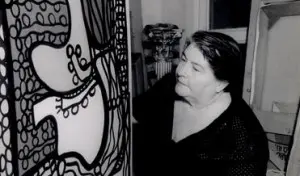Amelia Peláez: The Master of Color and Cuban Modernity

July 25, 2025 Hour: 12:18 pm
Amelia Peláez del Casal (1896–1968) is one of the most influential figures in modern Cuban art. Her body of work, which blends elements of Cubism with symbols of national identity, has left a lasting mark on the island’s visual arts and gained international recognition for its distinctive style.
RELATED:
Remedios Varo, Magician and Alchemist of The Contemporary Painting
Born in Yaguajay, in the former Las Villas province, Peláez moved to Havana in 1915, where she studied at the prestigious San Alejandro National Academy of Fine Arts. There, she was mentored by Leopoldo Romañach, who encouraged her to pursue further studies abroad. Starting in 1924, she studied in New York and later in Paris, where she absorbed the European avant-garde and developed a modern aesthetic that she would later reframe through a Cuban lens.
When she returned to Cuba in 1934, Peláez brought not only technical mastery but also a bold and innovative vision. Her paintings are known for their vibrant colors, thick black outlines, and iconography drawn from domestic life: flowers, fruits, and colonial interiors. This combination allowed her to craft a visual language reminiscent of stained glass, deeply rooted in Cuban architecture and culture.
Peláez was not only a prolific painter but also an accomplished ceramicist and muralist. Her most renowned public works include murals at the Habana Hilton Hotel (now Habana Libre), the Esso building, and the Court of Accounts. In each of these projects, she combined artisanal tradition with a modern aesthetic that broke new ground in Cuban visual art.
Her work was recognized both nationally and internationally. She took part in major exhibitions such as the Venice Biennale (1952), the São Paulo Biennial (1951), and the “Modern Cuban Painters” show organized by New York’s MoMA in 1944. Today, several of her pieces are held in the collections of the Cuban National Museum of Fine Arts and institutions like MoMA.
Amelia Peláez passed away in Havana in 1968, yet her influence endures. Her style has been compared to that of artists like Frida Kahlo for its ability to turn the intimate into the universal. Her work not only represents a significant era but remains a vital reference in the history of Latin American modern art.






